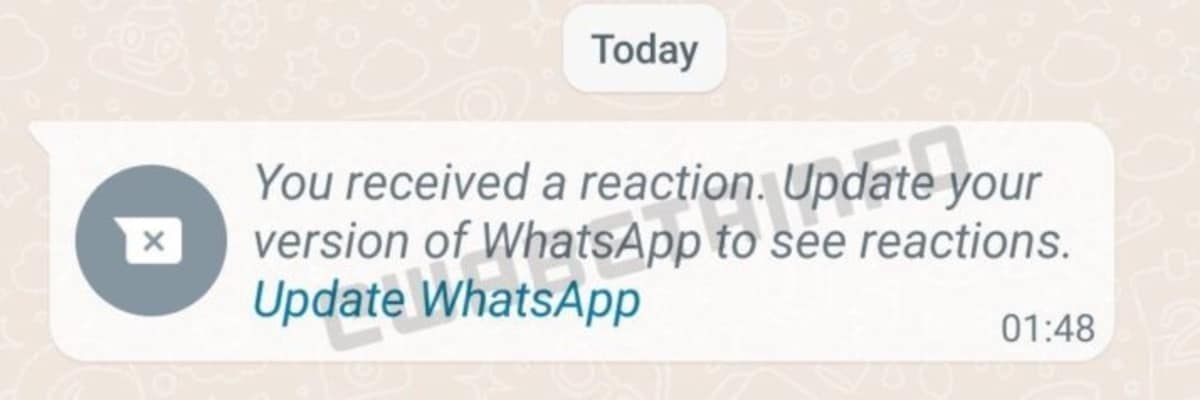WhatsApp is apparently testing a new message reactions feature, so far on a small subset of users. The news came to light on Thursday, when screenshots of the same were shared by a person who received a message notifying them of the new feature, in what can be seen to be a test. This comes as good news for people who are used to similar reactions being a mainstay on competitor apps like Facebook Messenger, and more often than not, have felt the lack of the same on the green messaging platform.

Message reactions are essentially a series of emoticons that appear when a user long presses a message they have received, allowing them to react instantly, without having to send emojis or type out words.
Alert: Update To Latest Version
While the feature is still a while away from being rolled out commercially, once it does come out, users will have to be on the latest version of the app to make use of it. Once it is available, users will receive a message informing them that their app is outdated, and that they will have to update in order to enjoy the new feature.
However, there may still be rather a long wait before users finally get their hands on the new tool, as WhatsApp is notorious for keeping new features under test for long durations, before deeming them worthy of being released.
The screenshot which brought the new feature to light was apparently included in a report by WeBetaInfo. Apart from Messenger, social media giants Twitter and Instagram too, allow users to react to messages sent to them by others. Even on Facebook, users can react to posts and comments in a similar manner.
Same Or Different?
It remains unclear as of now whether WhatsApp will include emoji that are similar to those available on Instagram and Facebook, or if the choice will be different.
The cited source also says that the tool will first be made available to users on Android, and then to people using iOS. As such, iPhone users will have to wait a little longer to experience the message reactions. This is quite different to what normally happens whenever new features are rolled out on different apps. Usually, the feature is either made available on iOS and Android at the same time, or is first made available on iOS, and later rolled out for Android.











